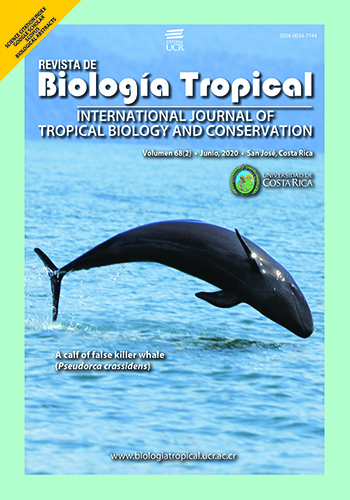Abstract
Introduction: The latitudinal diversity gradient (LDG), a fundamental ecology pattern for higher organisms, has explained the increase of species diversity from the poles towards the tropics. Can we explain the biodiversity of Papillomaviruses based on this pattern? Objective: To analyse the phylogenetic diversity and phylogeography of most known genotypes and species belonging to Papillomaviridae Family isolated and molecularly characterized by distant latitudinal locations around the world. Methods: We collected 238 gene sequences encoding for the L1 and L2 viral capsid proteins from PaVE database. A geographical heat map based on the PV locations allowed to analyse the distribution and the number of PV species per country. Subsequently, a phylogenetic tree based on concatenated amino acid sequences L1 and L2 was constructed using a combination of Bayesian and Maximum Likelihood (ML) methods with Geneious version 11.2.1 and BEAST version 1.8.4. Statistical analysis with Principal Coordinate Analyses (PCA) using the Jaccard similarity index for presence-absence were carried out to test the similarity of the groups in the phylogenetic tree based on their viral species, the host and origin country lists. Distance-based redundancy analysis generated an ordination plot of the similarity of viral species list per group of the phylogenetic tree vs. host species per group, the country list per group and the number of samples per group. Finally, the significance of each model was tested by Analysis of variance (ANOVA). Results: A clear tendency of most of the papillomavirus (PV) species clustering in the Northern regions appeared. Our phylogenetic analyses largely support the taxonomic division into major papillomavirus genera (Alpha, Beta, Gamma, Delta, Lambda, Xi, Upsilon and Chi papillomaviruses), as reported in previous studies. Chelonid PV’s, a papillomavirus in turtles, appeared as the oldest group for all papillomaviruses. Minor inconsistencies were found within some of the major taxonomic groups explained by the exhausted phylogenetic analyses. Due to the different sampling data efforts with little replication in certain groups, hosts and countries, numerical models did not fit to the proposed hypothesis. Conclusions: Phylogeographical analysis allowed determining the global distribution of papillomaviruses species diversity per latitudinal location. As most of the papillomavirus (PV) species were clustered in the Northern regions, this may clearly represent a statistical bias because larger efforts in PV studies have historically been done in the US and Europe. The biogeographical trend of a latitudinal diversity gradient does not apply for papillomaviruses. Even though no support to the phylogeographical pattern of LDG for PV was obtained, our results may only be the product of a socio-economical-scientific artefact and not a natural phenomenon.
##plugins.facebook.comentarios##

This work is licensed under a Creative Commons Attribution 4.0 International License.
Copyright (c) 2020 Alonzo Alfaro-Núñez, Jeffrey A. Sibaja-Cordero, Marlon S. Zambrano-Mila







